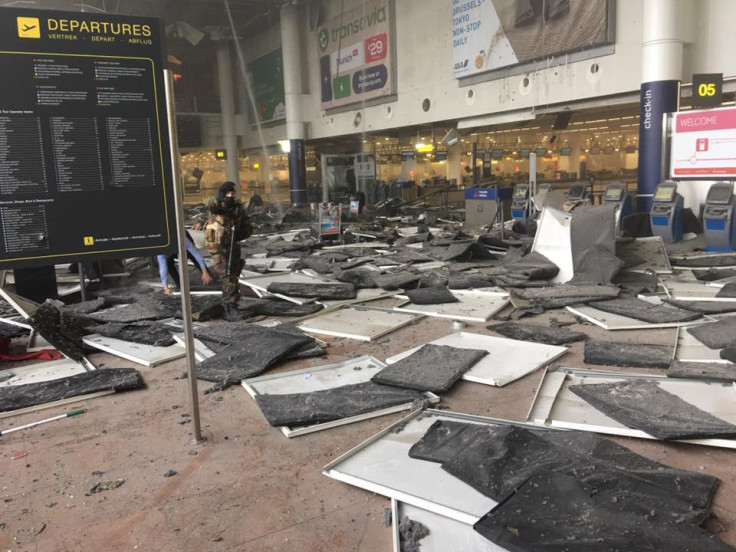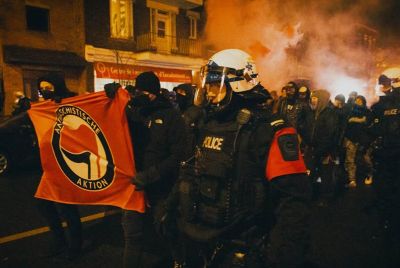Brussels attack: Please think before you share distressing pictures and videos of victims

The imagery coming from Brussels presents a challenge for us all – what do we want to see and what do we want to share? We are no longer passive consumers of media, accepting what mainstream broadcasters and publishers, guided by their own ethical codes, choose to show us.
Much of the video and still imagery published so far in the immediate aftermath of the Brussels terrorist bombings was shot by passers-by – members of the public caught up in the attacks, and whose first thought, like many a journalist or photographer, was to capture what had happened on their smartphone. They then post these to social media, where they can, and often are, shared far and wide. But should it be?
There are pictures of identifiable individuals, some bleeding and some clearly very seriously injured; others are apparently lifeless.
One picture being shared from Brussels, and placed at the top of the Daily Mail website and on the front page of today's Evening Standard newspaper, was of a woman, covered in blood, her clothes blown apart revealing her upper body, looking at the camera. Do her feelings of being photographed in this way count for anything?
This is not the first time such imagery has been caught: we saw it in Paris after the attack on Charlie Hebdo, with the execution of a police officer caught horrifically on a mobile phone. After the attack on the Bataclan theatre, there were the pictures of victims lying dead and injured in the street, or clinging desperately to a window ledge trying to escape the massacre inside. The ethics of the use of such imagery have long been debated and certainly before mobile phones made us all potential news photographers.
When Kim Phuc ran naked, burned by napalm, from her village in Vietnam, Nick Ut captured an image of her that is one of the best-known photographs of war before rushing the injured girl to hospital. AP, the agency he worked for, were initially unwilling to publish because of the nudity involved. They reconsidered, and that picture played a part in hastening the end of the war.
The pictures taken by Kevin Carter, most notably of a starving child in Sudan being stalked by a vulture, haunted him until he committed suicide at the age of 33. When asked about taking that picture he said: "It's my job title." Before he left, he had chased the vulture away.
Picture editors and news desks receiving these images have to consider the ethics of their use, and they sometimes get it wrong, even having argued out the ethics. But do those who take them and share them on social media consider the questions that mainstream media are so used to asking themselves?
Firstly, there is the possible distress to the individuals concerned. One picture being shared from Brussels, and placed at the top of the Daily Mail website and on the front page of today's Evening Standard newspaper, was of a woman, covered in blood, her clothes blown apart revealing her upper body, looking at the camera. Do her feelings of being photographed in this way count for anything?
Secondly, there is the potential distress of relatives seeing apparently dead or seriously injured relatives. Our ethical codes in the UK, for websites, newspapers and broadcasters, tell us it is not our job to inform the next of kin of an individual's death, yet that is a danger with some of the images being shared on Twitter and elsewhere today.
If we have learned anything in the 10 years we have had Twitter, it is the power of an image to powerfully capture a moment; to move people and to provoke action, often for the good.
Thirdly, there is the question of the provenance of some of the imagery. It is a bizarre fact that when these tragedies happen, there are some very strange individuals out there who post images from other events, hashtagging them as if they have happened today and no doubt grinning at their trickery as the RT figures roll in. It is very hard to verify this, of course, but before you share, remember as a rule of thumb: if an image is just too good to be true, it usually isn't.
So does this mean than in the face of such tragic events we all exercise such self-restrain that no images emerge or are shared?
Of course not. If we have learned anything in the 10 years we have had Twitter, it is the power of an image to powerfully capture a moment; to move people and to provoke action, often for the good. The picture of Aylan Kurdi, lying drowned on a European beach, and its subsequent sharing on Twitter, probably did more to move public opinion on the refugee crisis than a million words by any politician.
I am not going to sit her and pontificate on the posting of imagery by social media users as though mainstream media have a monopoly on their ethical use. We don't, and the ability of anyone with a mobile phone to capture news events has transformed journalism and democratised it, too. But with the ability to capture such imagery should come the knowledge that pictures can do harm as well as good – and we should all pause to think just for a moment before we hit the 'retweet' button.
David Banks is one of the UK's leading media law trainers and consultants, working with national and regional media, government, NGOs, PR agencies and charities.
© Copyright IBTimes 2025. All rights reserved.






















